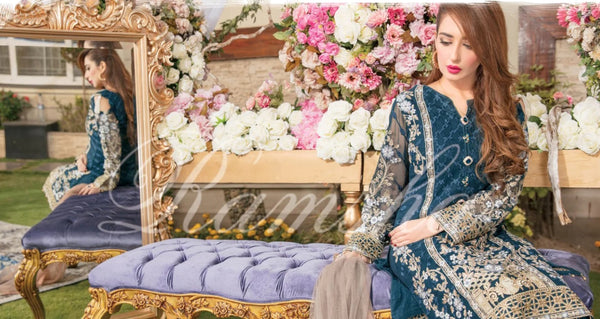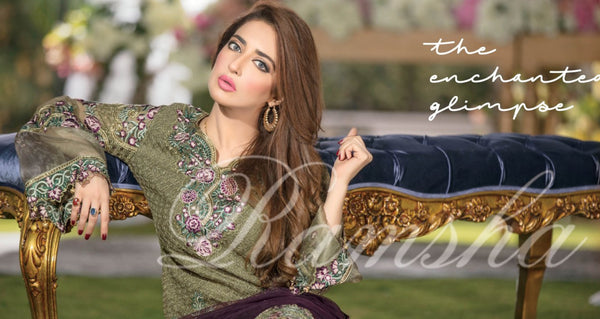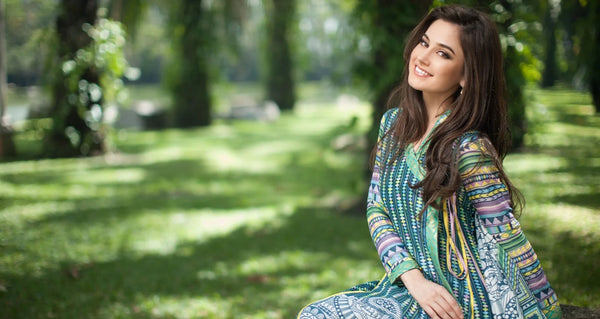What is the difference between salwar and kameez?
Traditional clothing holds a special place in every culture, reflecting the rich history and diversity of a particular region. In the South Asian subcontinent, one such traditional attire that has stood the test of time and continues to be popular is the salwar kameez. This ensemble, consisting of a loose-fitting tunic called the kameez and a comfortable bottom wear known as the salwar, is worn by both men and women. However, there are subtle differences between salwar and kameez that set them apart. In this blog post, we will delve into the intricacies of these two garments, exploring their unique characteristics and cultural significance.

Pakistani Salwar Kameez
Origin and Evolution
To comprehend the distinction between salwar and kameez, one must first understand their individual origins and historical significance. The salwar-kameez combination finds its roots in the ancient Mughal era, a period renowned for its opulent artistic expressions. The kameez, a long tunic-like garment, was embraced as a reflection of the Indo-Islamic fusion in clothing. Draped alongside it was the salwar, a loose-fitting trouser, a deviation from the conventional drape of sarees that were common in Indian clothing.
The Kameez: Epitome of Grace
The kameez, the upper garment of the salwar-kameez ensemble, has its own unique charm. It can be knee-length or longer and can have short sleeves, full sleeves, or no sleeves at all, depending on the wearer's preference and the occasion. The kameez is available in a wide range of fabrics, colors, and designs, suitable for everyday wear or special occasions like weddings and celebrations. Its versatility allows it to be paired with different types of bottom wear, offering various styling options that cater to different body types and fashion preferences.
Additionally, the kameez can be customized to fit perfectly, ensuring comfort and confidence for the wearer. Whether it is a traditional or modern design, the kameez effortlessly combines tradition with contemporary fashion, making it a timeless choice for women of all ages. With its endless possibilities, the kameez truly stands as a symbol of cultural identity and fashion expression.

Plain Black Salwar Kameez With Floral Dupatta
The Salwar: Comfort Redefined
The salwar is a loose-fitting pant that is traditionally worn as part of the salwar-kameez ensemble. It is typically gathered at the waist with a drawstring or elastic band and tapers towards the ankles. The salwar offers a comfortable and relaxed fit, allowing for ease of movement. It can be made from various fabrics, such as cotton, silk, or synthetic materials, and comes in a range of colors and patterns. The salwar is a versatile bottom wear option that can be paired with different styles of kameez to create a variety of looks, suitable for both casual and formal occasions.
Key Differences
1. Shape and Appearance:
The two components' shapes and structures are the most significantly different. The upper portion of the outfit is defined by the kameez, which comes in a variety of lengths and styles. The lower half of the outfit is made up of the salwar, which has a loose and cosy fit.
2. Bottom Wear Variations:
The modern adaptations of the outfit have given rise to alternatives like churidars (tightly fitting trousers) and palazzos (wide-legged trousers), while the classic salwar is a roomy pant that gathers at the waist and ankles. These modifications provide a wide range of styling options for various situations and individual tastes.
3.Occasional Suitability:
The distinction between salwar and kameez becomes particularly evident when considering the occasion. The kameez, being the more elaborate and often embellished component, is well-suited for festive occasions, weddings, and celebrations. On the other hand, the salwar, with its comfortable and practical design, is equally appropriate for casual and everyday wear.
4. Styling Options:
The salwar can be paired with different styles of kameez, such as straight-cut, A-line, or Anarkali, allowing for various outfit combinations. This versatility provides options to cater to different body types and fashion preferences. The kameez, on the other hand, can be paired with different bottom wear options like churidar, palazzo pants, or even jeans, offering additional styling choices.
5. Cultural Significance:
The salwar-kameez ensemble holds cultural significance in many South Asian countries and is considered traditional attire. The salwar and kameez combination represents the fusion of comfort, modesty, and style, reflecting the cultural heritage of the region.
Certainly! Here are some additional features of the salwar and kameez in the salwar-kameez ensemble:

Sharara Style Salwar Kameez
Salwar:
1. Fit and Comfort:
The salwar is known for its loose and relaxed fit, providing comfort and ease of movement. It is a preferred choice for those seeking a more comfortable alternative to tight-fitting pants or trousers.
2. Versatility:
Salwars come in various lengths and styles, including straight-cut, flared, or Patiala, giving wearers the option to choose the style that best suits their body type and personal preference.
3. Embellishments:
Salwars can be plain or adorned with subtle embellishments, such as embroidery, sequins, or mirror work, depending on the desired level of decoration and the overall aesthetic of the outfit.
4. Fabric Choices:
Salwars can be made from a variety of fabrics, including cotton, silk, chiffon, georgette, or synthetic materials, allowing for different levels of breathability, drape, and texture.
Kameez:
1. Length and Silhouette:
The kameez comes in various lengths, ranging from knee-length to ankle-length, allowing wearers to choose a style that flatters their body shape and height. It can be straight-cut, A-line, Anarkali, or asymmetrical, offering different silhouettes and draping options.
2. Embroidery and Embellishments:
The kameez is often embellished with intricate embroidery, mirror work, zari, or stone embellishments, adding a touch of glamour and elegance to the overall look. The level of embellishment can vary, from minimal to heavily adorned, depending on personal preference and the occasion.
3. Necklines and Sleeve Styles:
The kameez offers a wide range of neckline options, such as V-neck, round neck, boat neck, or sweetheart neck, allowing for different necklines that suit individual preferences and face shapes. Similarly, sleeve styles can vary, including short sleeves, full sleeves, bell sleeves, or sleeveless, adding versatility and style to the overall design.
4. Fabric Choices:
Kameez can be made from a variety of fabrics, including silk, chiffon, georgette, crepe, or cotton, each offering a different level of drape, texture, and breathability. The choice of fabric can greatly impact the overall look and feel of the kameez.
These features highlight the versatility and customization options available within the salwar-kameez ensemble, allowing individuals to create unique and personalized outfits that reflect their style and cultural identity.

Heavy Embroidered Salwar Kameez
Conclusion
In the colorful spectrum of Indian attire, the salwar and kameez ensemble holds a cherished place for its timeless elegance and adaptability. While both components contribute to the overall allure, they each bring a unique charm that caters to various occasions, body types, and style preferences. The kameez, with its graceful silhouettes and intricate detailing, evokes a sense of sophistication, while the salwar, with its comfort-driven design, offers a blend of ease and style. Embodying the essence of tradition and modernity, the salwar and kameez ensemble continues to be a beloved choice for individuals seeking the perfect balance between cultural heritage and contemporary fashion.






